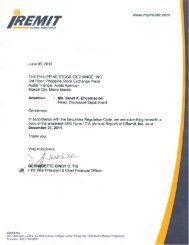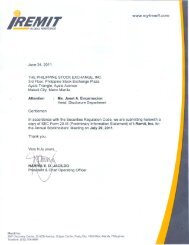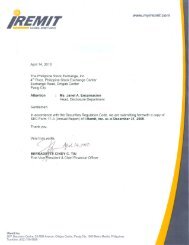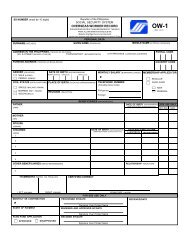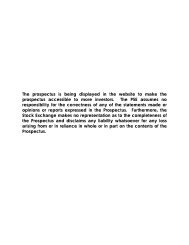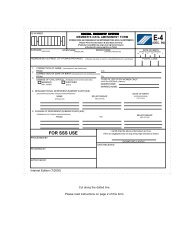SEC Form 20-IS - iRemit Global Remittance
SEC Form 20-IS - iRemit Global Remittance
SEC Form 20-IS - iRemit Global Remittance
You also want an ePaper? Increase the reach of your titles
YUMPU automatically turns print PDFs into web optimized ePapers that Google loves.
Impairment of Financial Assets<br />
The Group assesses at each balance sheet date whether there is an objective evidence<br />
that a financial asset or group of financial assets is impaired. A financial asset or a<br />
group of financial assets is deemed to be impaired if, and only if, there is an objective<br />
evidence of impairment as a result of one or more events that has occurred after the<br />
initial recognition of the asset (an incurred ‘loss event’) and that loss event (or events)<br />
has an impact on the estimated future cash flows of the financial asset or the group of<br />
financial assets that can be reliably estimated. Evidence of impairment may include<br />
indications that the borrower or a group of borrowers is experiencing significant financial<br />
difficulty, default or delinquency in interest or principal payments, the probability that they<br />
will enter bankruptcy or other financial reorganization, and where there are observable<br />
data that indicates that there is a measurable decrease in the estimated future cash<br />
flows, such as changes in arrears or economic conditions that correlate with defaults.<br />
Financial assets carried at amortized cost<br />
For financial assets carried at amortized cost, the Group first assesses whether objective<br />
evidence of impairment exists individually for financial assets that are individually<br />
significant, or collectively for financial assets that are not individually significant.<br />
If there is objective evidence that an impairment loss has been incurred, the amount of<br />
the loss is measured as the difference between the asset’s carrying amount and the<br />
present value of the estimated future cash flows (excluding future credit losses that have<br />
not been incurred). The carrying amount of the asset is reduced through the use of an<br />
allowance account and the amount of loss is charged to the consolidated statement of<br />
income. Interest income continues to be recognized based on the original EIR of the<br />
asset. Receivables, together with the associated allowance accounts, are written off<br />
when there is no realistic prospect of future recovery and all collateral has been realized.<br />
If subsequently, the amount of the estimated impairment loss decreases because of an<br />
event occurring after the impairment was recognized, the previously recognized<br />
impairment loss is reduced by adjusting the allowance account. If a future write-off is<br />
later recovered, any amounts formerly charged are credited to profit or loss.<br />
If the Group determines that no objective evidence of impairment exists for an<br />
individually assessed financial asset, whether significant or not, it includes the asset in a<br />
group of financial assets with similar credit risk characteristics and collectively assesses<br />
for impairment. Those characteristics are relevant to the estimation of future cash flows<br />
for groups of such assets by being indicative of the debtors’ ability to pay all amounts<br />
due according to the contractual terms of the assets being evaluated. Assets that are<br />
individually assessed for impairment and for which an impairment loss is, or continues to<br />
be, recognized are not included in a collective assessment for impairment.<br />
The present value of the estimated future cash flows is discounted at the financial<br />
asset’s original EIR. If a financial asset has a variable interest rate, the discount rate for<br />
measuring any impairment loss is the current EIR, adjusted for the original credit risk<br />
premium.<br />
For the purpose of a collective evaluation of impairment, financial assets are grouped on<br />
the basis of such credit risk characteristics as geographical classification. Future cash<br />
flows in a group of financial assets that are collectively evaluated for impairment are<br />
estimated on the basis of historical loss experience for assets with credit risk<br />
characteristics similar to those in the group.<br />
21



